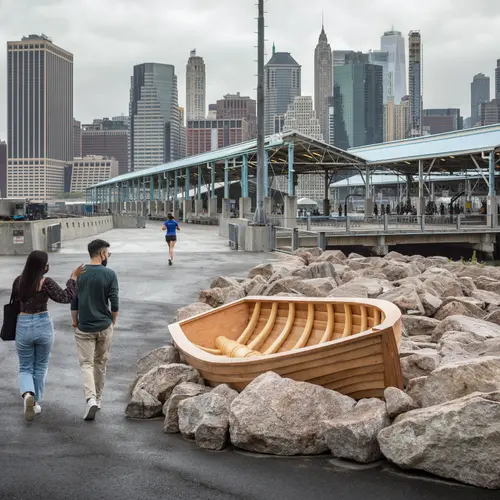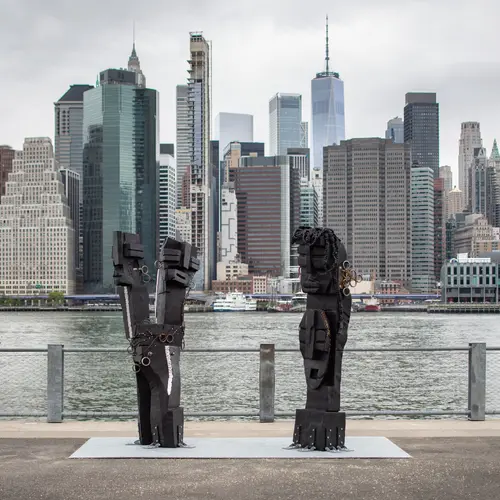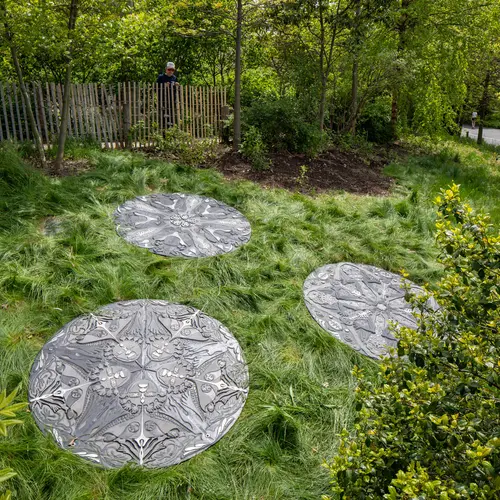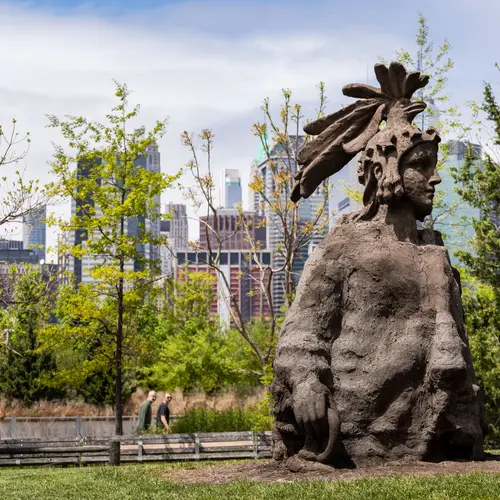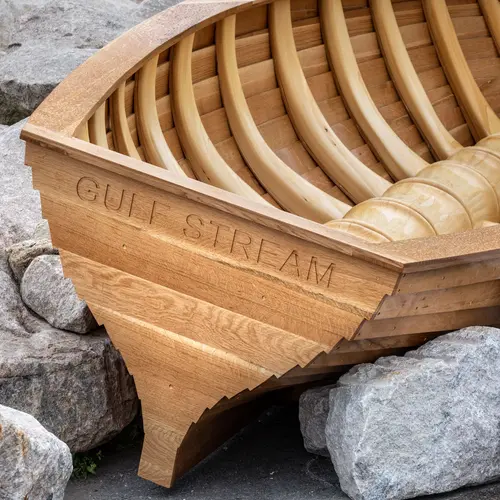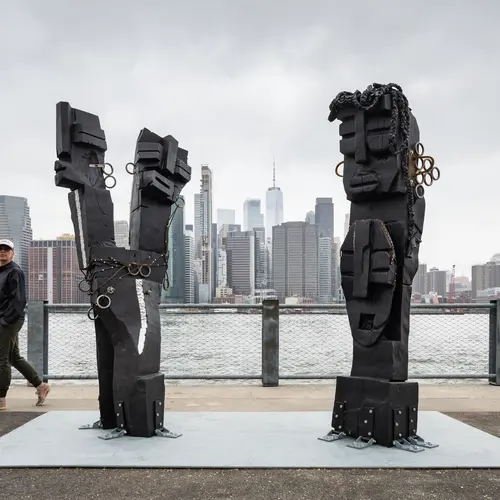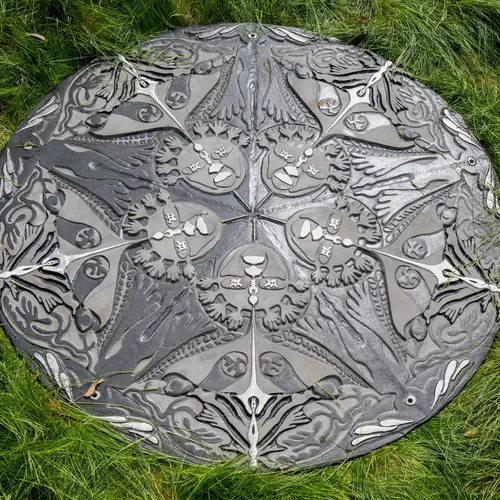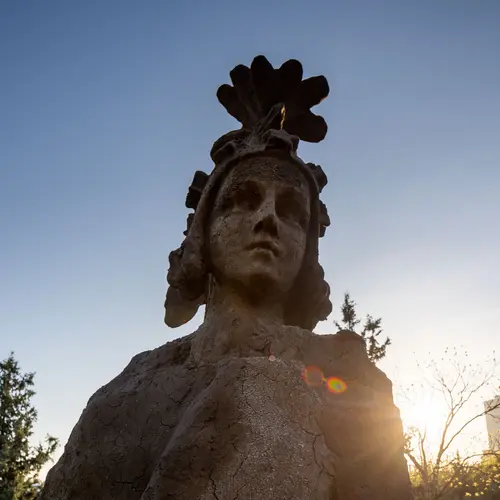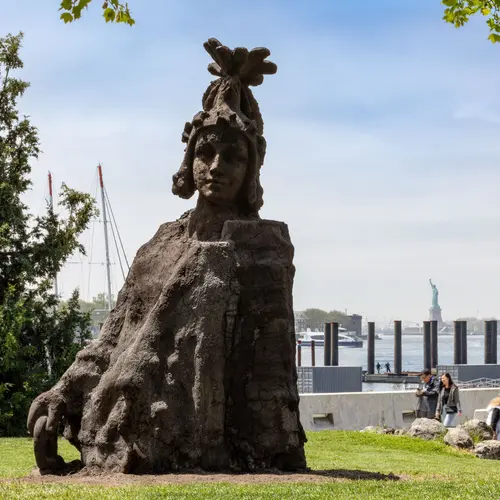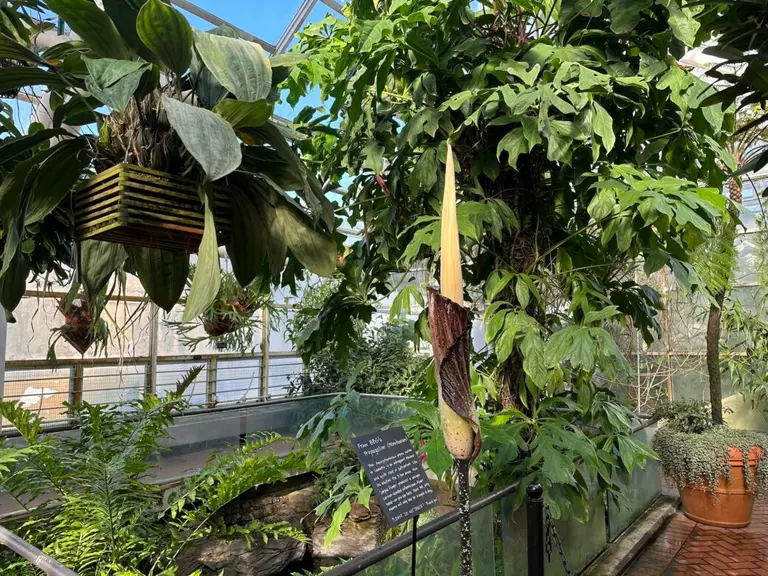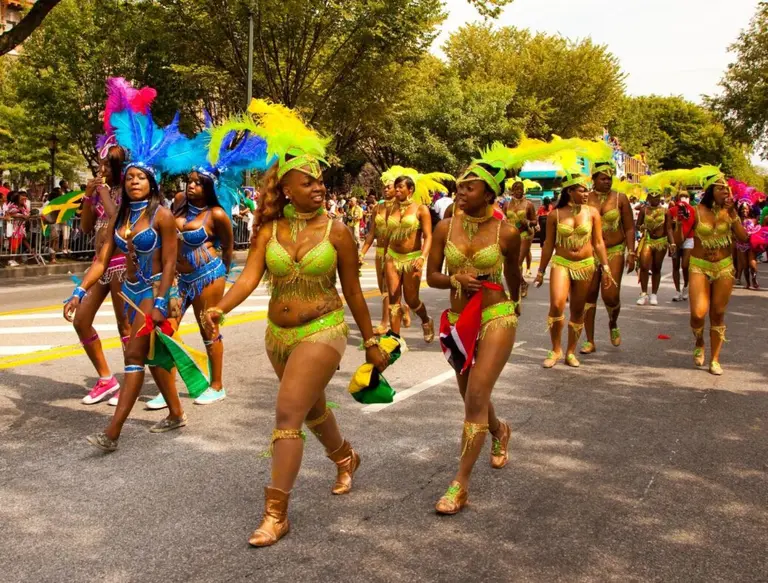New public art exhibit in Brooklyn Bridge Park explores ‘hybrid identities’ created by diaspora
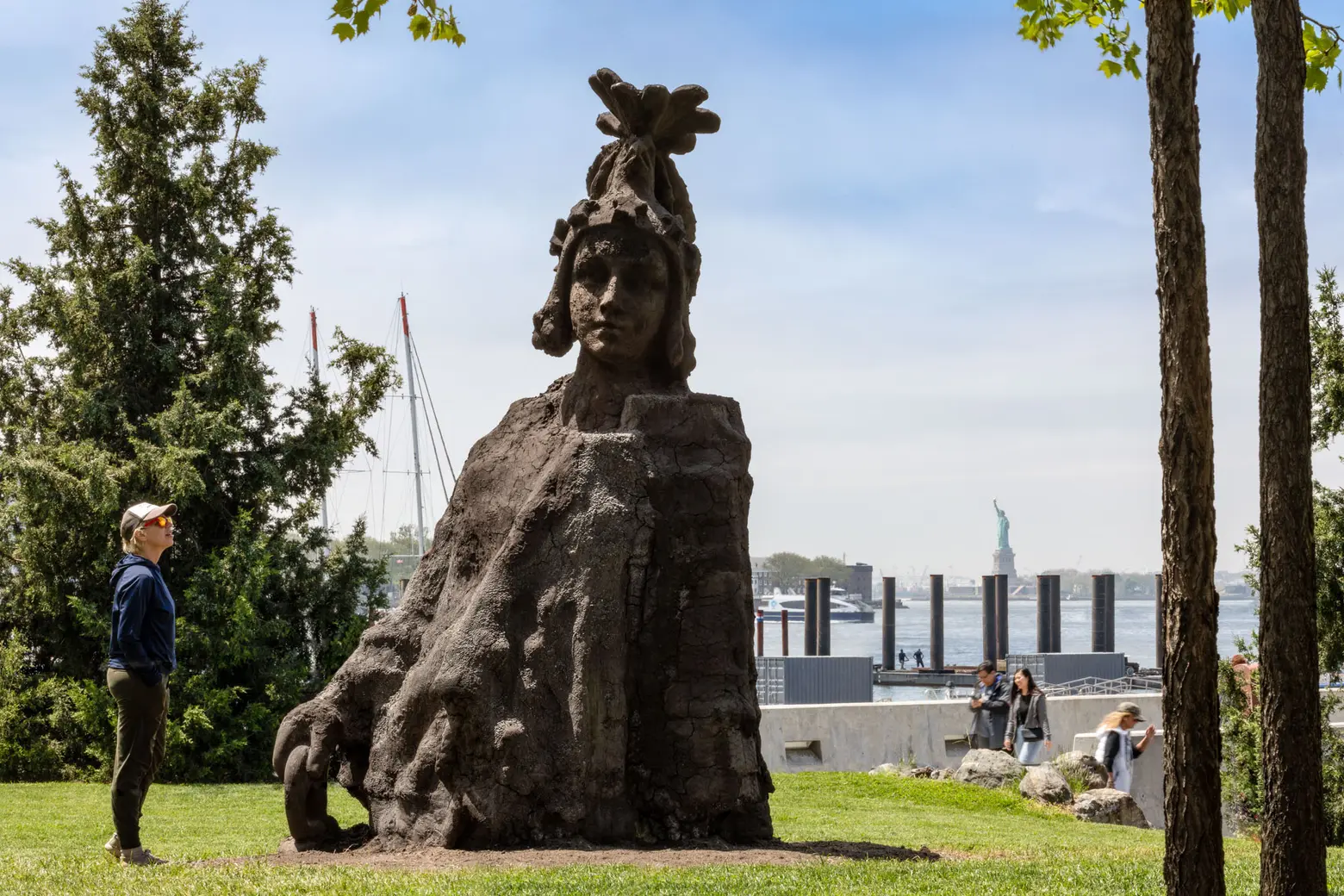
Kiyan Williams, “Ruins of Empire,” 2022. Courtesy of the artist. Photo: Nicholas Knight, Courtesy of Public Art Fund, NY Kiyan Williams, “Ruins of Empire” was commissioned by Public Art Fund and presented as part of Black Atlantic at Brooklyn Bridge Park, New York City, May 17–November 27, 2022
Spread across three piers at Brooklyn Bridge Park, Black Atlantic is a new outdoor art exhibition inspired by the diaspora across the Atlantic Ocean and which proposes “an open, multifaceted, and heterogeneous idea” of Black identity in the United States today. Co-curated by artist Hugh Hayden and Public Art Fund Adjunct Curator Daniel S. Palmer, Black Atlantic features work from Hayden, and artists Leilah Babirye, Dozie Kanu, Tau Lewis, and Kiyan Williams. The exhibition is on view through November 27.
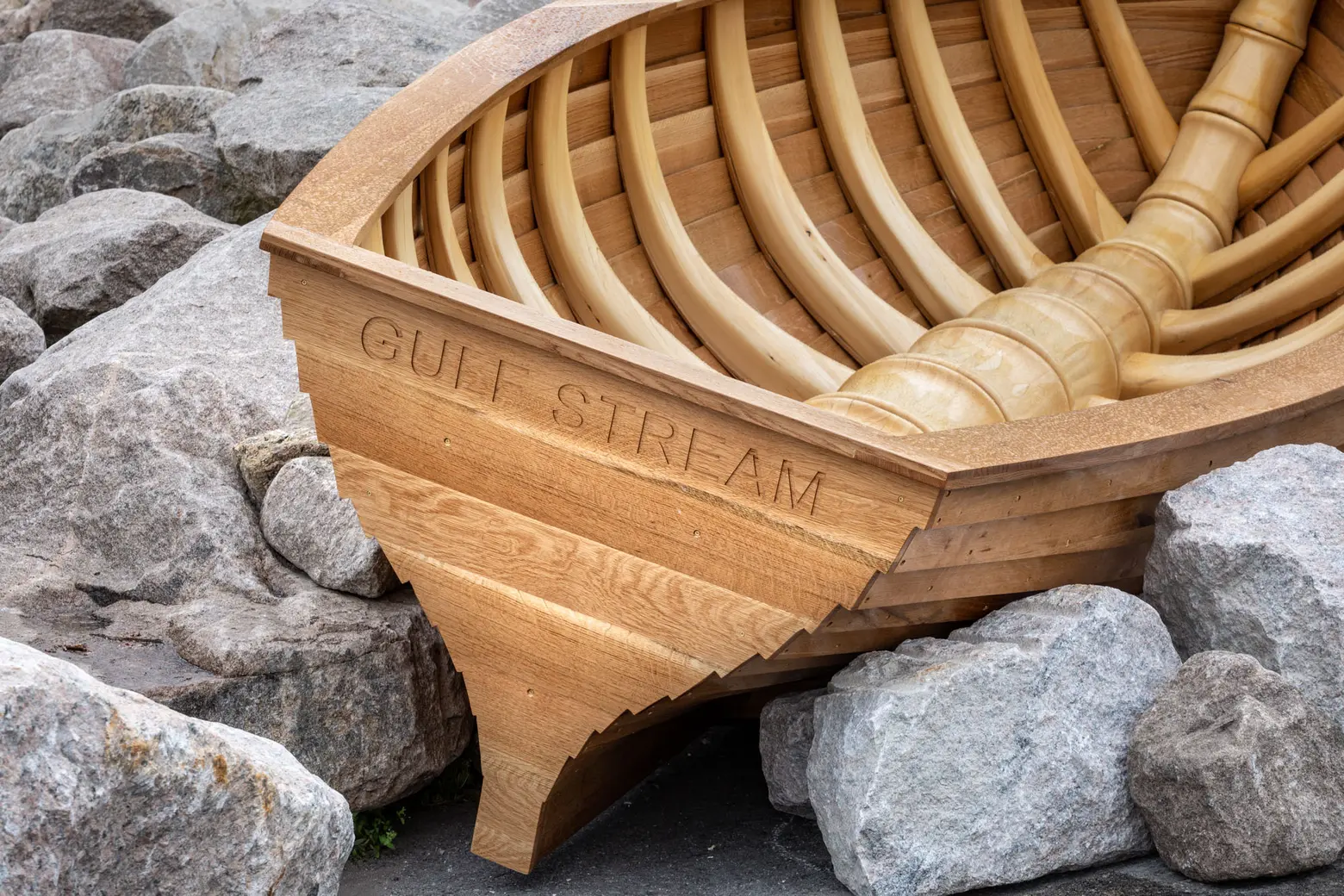
Hugh Hayden, “The Gulf Stream,” 2022. Courtesy of the artist and Lisson Gallery. Photo: Nicholas Knight, Courtesy of Public Art Fund, NY. “The Gulf Stream” was commissioned by Public Art Fund and presented as part of Black Atlantic at Brooklyn Bridge Park, New York City, May 17–November 27, 2022.
The historic waterfront location is significant to Black Atlantic, named after the book by Paul Gilroy, because it represents the area that served as a network between the United States and the rest of the world, including Africa, Europe, and the Caribbean. The waterfront location adds an aspect to the exhibition that “highlights the complex hybrid identities that have developed through the exchange of culture and ideas over centuries along transatlantic routes,” according to a press release.
“There’s magic and agency involved in creating a work of art by hand. In conceiving this exhibition, I was drawn to the idea of assembling a group of sculptors whose practice involves material exploration and an element of the handmade,” Hayden said.” It speaks to the idea of materializing a vision for the future and crafting your own identity.”
“Black Atlantic will illustrate a counterpoint to a monolithic perception of Blackness, and is reflective of the multitude of ways in which individuals can create a new vision within the context of American culture that is expansive, malleable and open to all.”
Hayden’s piece, The Gulf Stream, is a rowboat that sits along a pathway near the southern entrance of Pier 2, seemingly washed ashore and left sitting on rocks. The interior of the vessel’s hull contains a “sculptural carcass,” consisting of cedarwood that comes together to form a human rib cage.
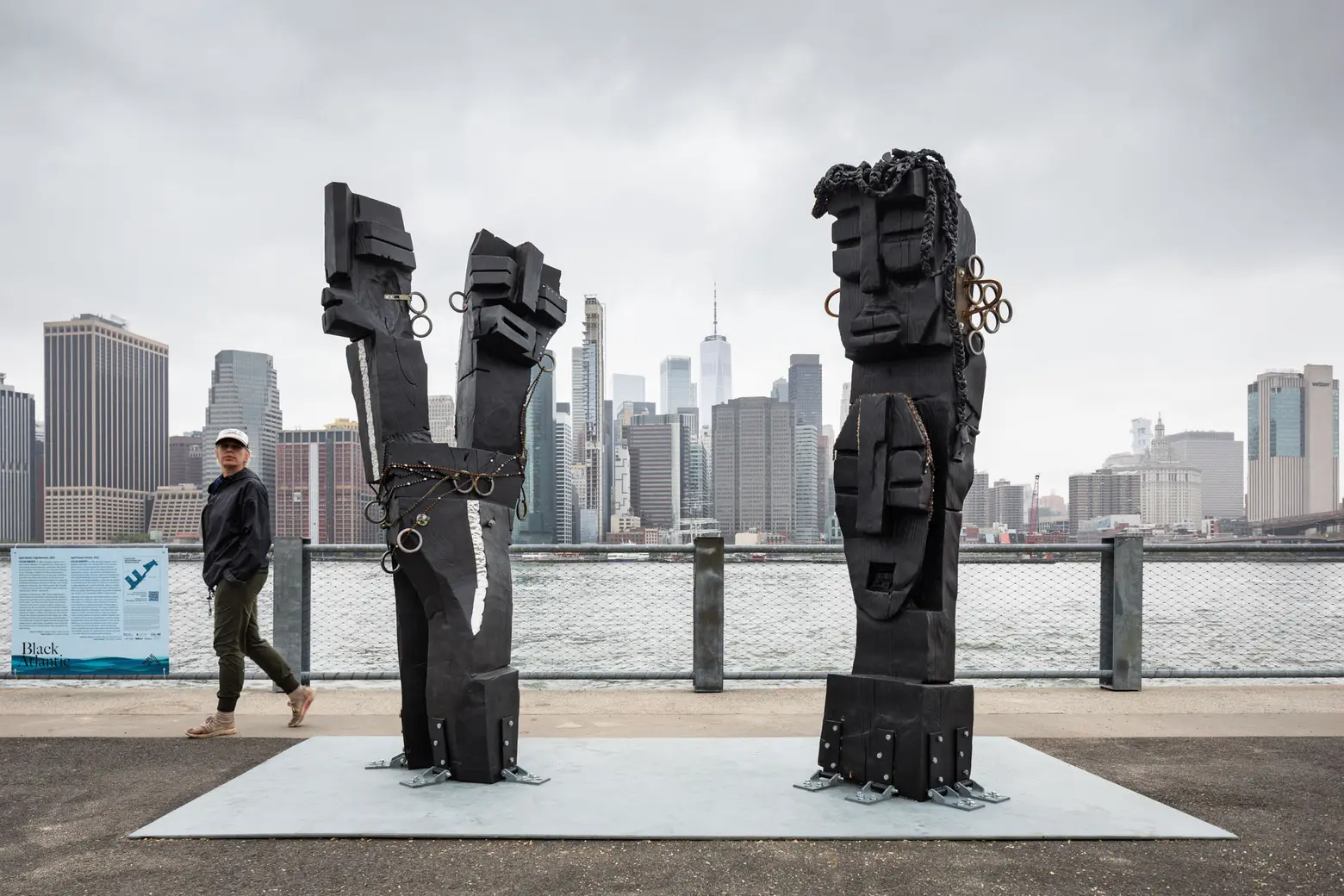
Leilah Babirye, “Agali Awamu (Togetherness),” 2022. Courtesy of the artist, Gordon Robichaux, NY, and Stephen Friedman Gallery, London. Photo: Nicholas Knight, Courtesy of Public Art Fund, NY “Agali Awamu (Togetherness)” was commissioned by Public Art Fund and presented as part of Black Atlantic at Brooklyn Bridge Park, New York City, May 17– November 27, 2022
Babirye’s work, Agali Awamu (Togetherness), consists of two groups of totemic sculptures that are located on opposite ends of Pier 1 close to the water. The sculptures are made of hollowed tree trunks that have been decorated with welded metal and objects that resemble jewelry. Babirye, who in 2015 was forced to flee from her home in Uganda due to homophobic persecution, says that the piece as a whole is supposed to represent a “chosen, queer family, whose visibility in a public space is a beacon of empowerment.”
In On Elbows, Kanu aims to portray private thoughts being brought into a public space. The piece consists of a concrete chaise lounge sitting on Texas Wire Wheels, meant to resemble a slab car, alluding to the slab car culture which originated in Kanu’s hometown of Houston, Texas. Situated nearby is a container that holds a dark liquid that “pulsates to the rhythm of a heartbeat, suggesting the processes of the unconscious.”
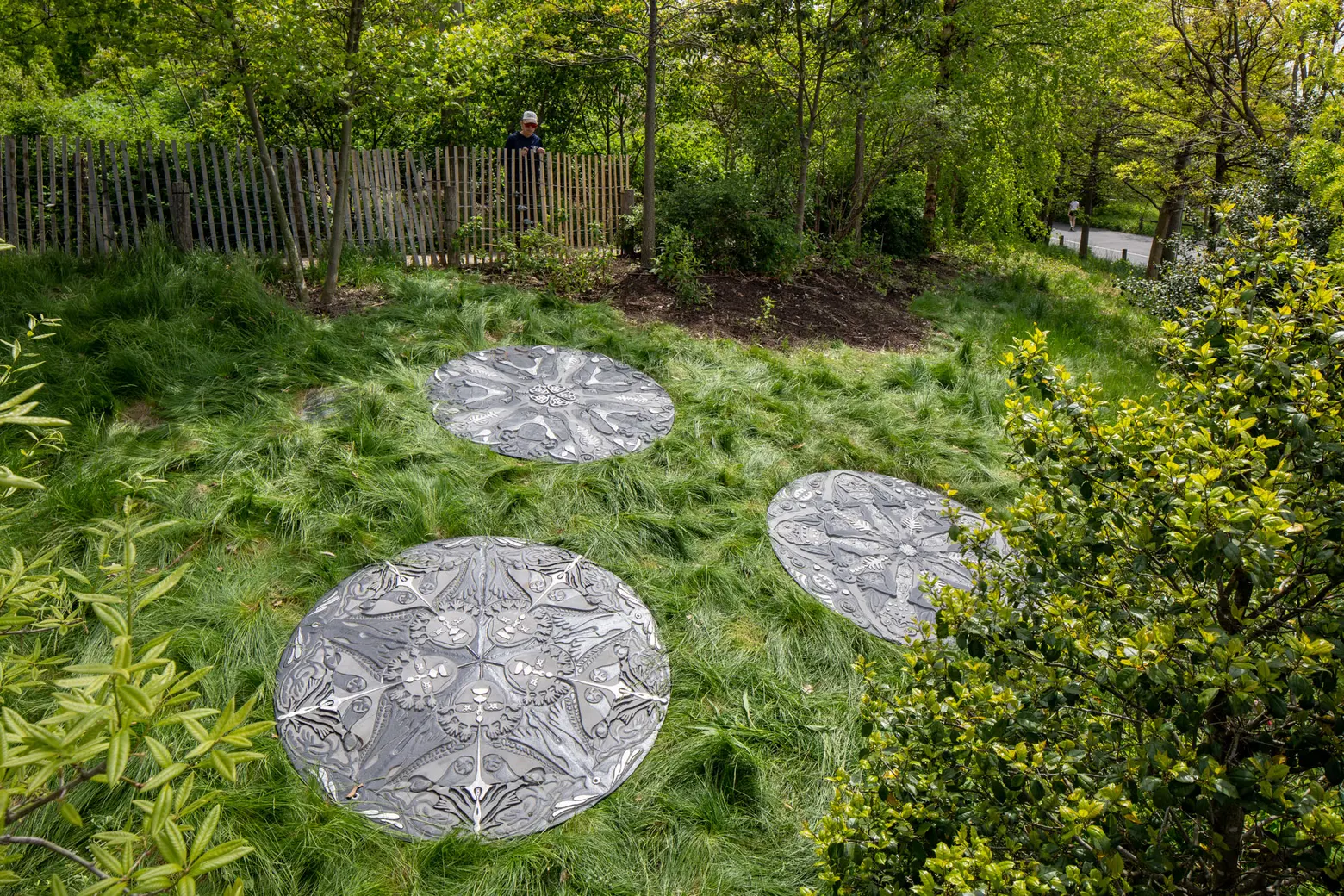
“We pressed our bellies together and kicked our feet, we became something so alien that we no longer had natural predators,” 2022.”We watched humankind evolve as we absorbed into the sea floor, the moon stared down at us and told us the Earth had a heavy heart,” 2022. “We wondered if the angels had abandoned us, or if they simply changed shape without letting us know. Every night creatures vanished, every morning strangers would arrive,” 2022. Artworks: Courtesy of the artist and Night Gallery. Photo: Nicholas Knight, Courtesy of Public Art Fund, NY Commissioned by Public Art Fund and presented as part of Black Atlantic at Brooklyn Bridge Park, New York City, May 17–November 27, 2022.
Lewis’ piece is made up of three six-foot-wide iron discs that were meticulously detailed using sand-casting. The designs are inspired by crinoids, ancient sea animals that Lewis began studying in 2019. The three discs also include West African Adinkra symbols, and the discs’ grouping means to ruminate on the “wandering of the ancient sea animal, the scattering of their fossils, and their coexistence with Black bodies throughout the diaspora.”
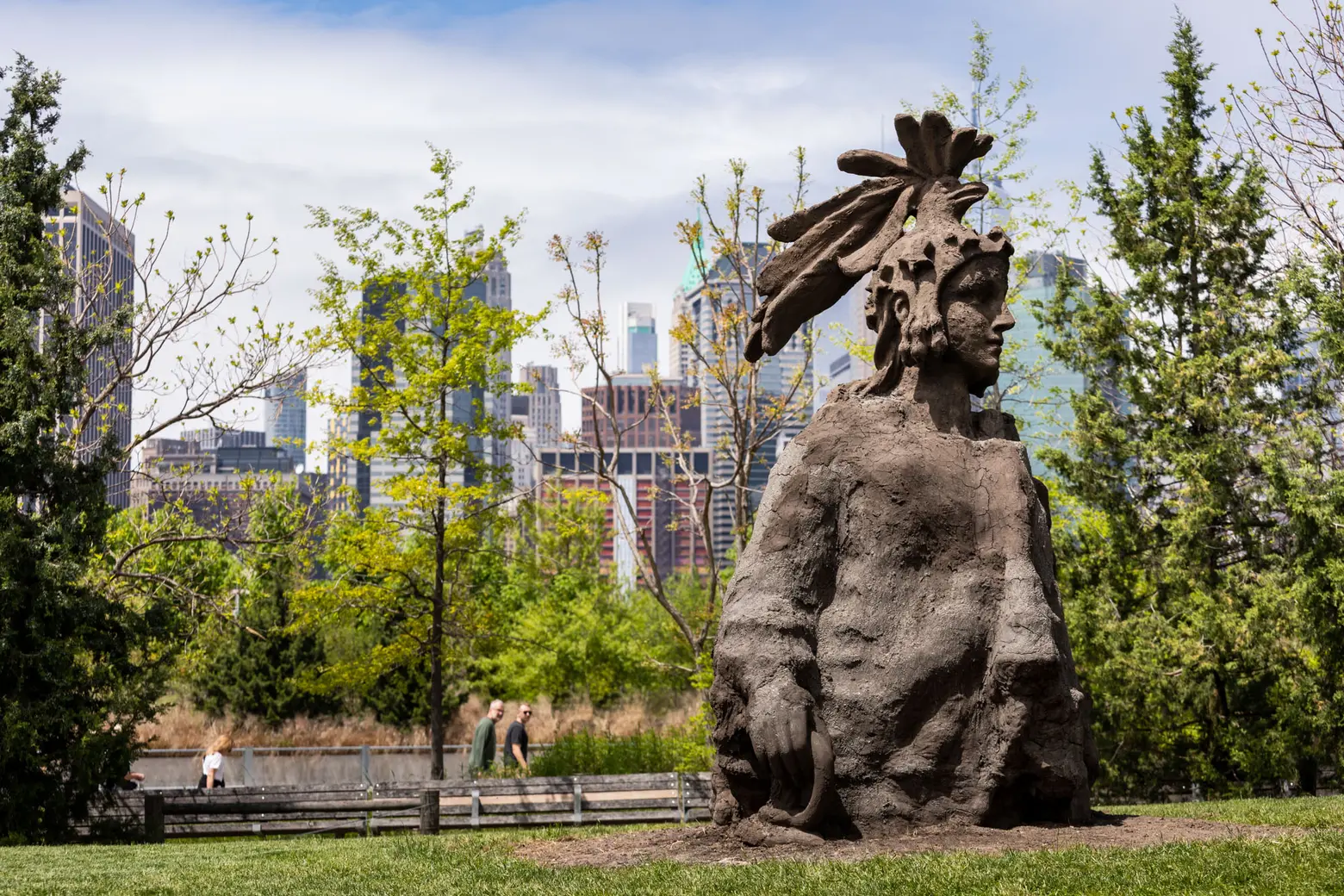
Finally, Williams, a Newark native, reimagines the Statue of Freedom atop the United States Capitol building in D.C, which was constructed by slaves. Called Ruins of Empire, the piece consists of a statue made of bronze and platinum that appears decayed, covered in mud, and sinking into the ground. The sculpture’s decrepit appearance is meant to show “how American ideals of freedom are tied to subjugation, drawing inspiration from sci-fi tropes of a destroyed monument like the Statue of Liberty as a symbol for a world ruined by environmental devastation,” according to the artist.
RELATED:
- These giant sculptures in the Garment District ‘wave hello’ to New Yorkers
- Green-Wood Cemetery’s first-ever artist in residence to open sculpture installation in the catacombs
- 9 sculptures of the world’s most endangered animals unveiled in Greenwich Village
All photos courtesy of Nicholas Knight for the Public Art Fund, NY
